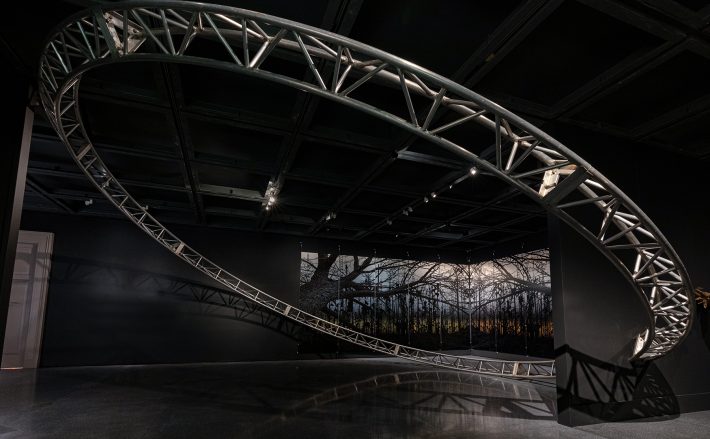In a retrospective on view at NOMA, Dawn DeDeaux: The Space Between Worlds demonstrates the artist’s longstanding concern with the most pressing issues of our time.
by New Orleans Museum of Art for Hyperallergic

In Dawn DeDeaux: The Space Between Worlds, the retrospective currently on view at the New Orleans Museum of Art (NOMA), works from across five decades show the artist’s longstanding concern with our society’s most pressing issues, including social justice and environmental concerns. On view through January 23, 2022, The Space Between Worlds gestures toward an uncertain future imperiled by runaway population growth, breakneck industrial development, and the imminent threat of climate change.
Since the 1970s, DeDeaux has used video, performance, photography, sculpture, and installation to create art that grapples with the social, political, and environmental impacts of this era we now refer to as the Anthropocene — one permanently scarred by human activity and ambition. In the exhibition catalogue, which will be available in spring 2022, journalist and scholar Walter Isaacson notes, “Dawn’s exhibition at NOMA presents a visual rumination on mankind’s past and future and our increasingly fragile existence on earth … Dawn’s works prompt us to think about our tenuous grasp on the Earth and what would be lost if Earth were to become uninhabitable or destroyed.”
DeDeaux responds directly to the unique threats facing her home state of Louisiana, one of the fastest disappearing landmasses in the world. The Space Between Worlds is organized around a series of immersive installations that span DeDeaux’s entire career thus far. Highlights include early projects like CB Radio Booths, which linked communities across New Orleans via radio and satellite, and more recent works from her MotherShip series, which plots our escape from a ruined Earth. In response to The Space Between Worlds, author and catalogue contributor John M. Barry writes, “A ‘retrospective’ is by definition a look backward, but in the case of Dawn DeDeaux’s work, that definition doesn’t seem to fit … so much of what she’s done seems of the now. It’s beyond prescient.”